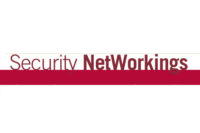Back in 1980, Mr. Alan Higgins (now sales manager for ADI – Florida and points south) and I were a two-man operation running an alarm equipment distribution outlet in beautiful Cincinnati, Ohio. Because we were new in the market and up against major competition, it was often difficult to meet our monthly sales goals. As each month approached its end date, I would often wish for lightning storms to strike our immediate area to boost our sales totals.
In those days most burglar and fire alarm controls had little or no built-in protection against the power surges that often accompany local lightning strikes. Suffice it to say that a good lightning storm would wipe out a number of alarm controls, and I would happily greet the five to eight installation trucks inevitably waiting in our parking lot the morning after a major storm. Lightning may not have been good for alarm installation companies and their end-users, but on the control panel selling side of the equation it meant business.
Manufacturers soon recognized this recurring problem and added electronic measures to their panels to provide some level of protection against surges. While no device, then or today, can withstand a direct lightning hit, standard burglar and fire alarm panels now include some levels of surge protection in their circuit boards.
However, surges are a continuing issue and the negative effects on our installed systems are multiplied by the size and complexity of IP networked and large-scale installations. Such surges can affect analog and IP CCTV, access control, intrusion, fire alarms, emergency voice alarm communication systems, emergency phones — basically all of the types of systems that our industry installs. In some cases not only are control devices affected but even remote sensors and sounders can be disabled by power surges.
I recently spent some quality time with my friend Jason Klein, national sales manager for Ditek. This company is veteran-owned, builds its products in Florida, and is approaching 30 years of supplying surge protection equipment for our industry.
One aspect of my discussion with Jason was the potential cost when a surge wipes out a major installation. Without naming names, Jason recounted the story of a transient surge that completely destroyed a fire alarm system worth $260,000; forcing the client to pay $61,000 for human fire-watch services while the blown-up fire alarm system was replaced. This is big money in anyone’s book, and it made me take a new look at the why’s and how’s of protecting the systems we install from surges.
In the fire alarm world there has been direct addressing of the transient surge protection issue in the NFPA 72 2013 edition. Specifically, section 12.2.4.2 states that “signaling circuits shall have” surge protection installed. Certain metro areas around the country also mandate power surge protection be on fire alarm panels. When a surge suppressor reacts to an over-voltage condition, some of the internal electronics may sacrifice themselves when performing their protective functions. Most devices rely on LED verification that is rarely checked during service calls or system tests, so a damaged surge protector that cannot annunciate or notify the user/alarm company provides a false sense of functionality that will bite the system when the next power surge occurs.
While surge protection devices can be obtained from other sources, only the Ditek products such as the DTK-TSS1 provide a dry contact output that can be connected to a “trouble” circuit to notify the client locally on their panel as well as the central station. So if a power surge occurs, the Ditek device will help protect the installed system and notify the client and alarm company if the device has self-sacrificed.
This is a critical equipment addition that companies installing fire alarm systems should closely consider. For the cost of roughly $300 per system this is an inexpensive but critical protection device that should be included with every fire system sold. The Ditek surge protection products not only provide protection for the new system, but these can also be used as a differentiator when selling the system to the client. Every potential client has experienced occasional surge problems in their home or business and will respond favorably to alarm installation sales people who point out that they will provide surge protection on a proposed system because they want the client to get the longest life out of their investment.
Another class of devices that can be prone to surge damage is outdoor IP cameras. Ditek produces a full-featured lineup of IP and PoE protection technologies, such as the individual device MRJPOE to protect a single outdoor PoE or PoE+ IP camera, and the RM12POE which allows the connection of up to 12 remote IP/PoE devices. Why protect the IP feeds coming into a network? Because a surge can travel through the cabling from a remote device, damage or destroy a network switch, and possibly cause further issues with other switch-connected devices such as servers running VMS software. One attractive feature of the RM12POE rack-mount surge suppression is that individual modules that valiantly die in performing their protection function can be replaced one for one; the whole surge protective panel doesn’t have to be reinstalled.
With any surge protection devices the functionality of the protection is directly related to whether the devices are proper connected to a “ground.” Ditek provides detailed information to help installers achieve the critical ground connection that will fully enable the surge suppressors to do their job.
While no manufacturer can protect devices if there is a direct lightning hit, Ditek products have proven their reliability in providing surge protection from transients from remote strikes, power company anomalies and inductive surges that occur when a motor or pump starts up. Such current-sucking machines can also cause a surge when they are turned off and stop drawing current.
Check out Ditek products at www.diteksurgeprotection.com. I particularly enjoy the active graphic on their home page that shows lightning hit areas from the previous 24 hours across the U.S. If only we had that technology in the early 1980s I would probably still be driving a BMW.
Thanks to Jason Klein for the information on Ditek and a shout-out to my man in Florida, Alan Higgins.










